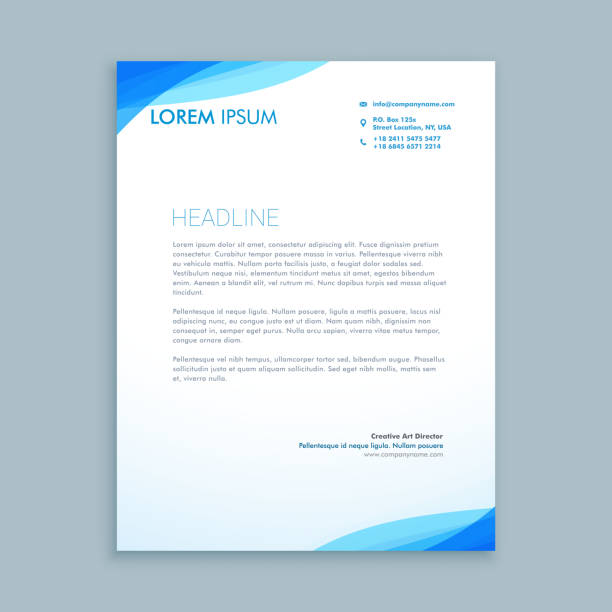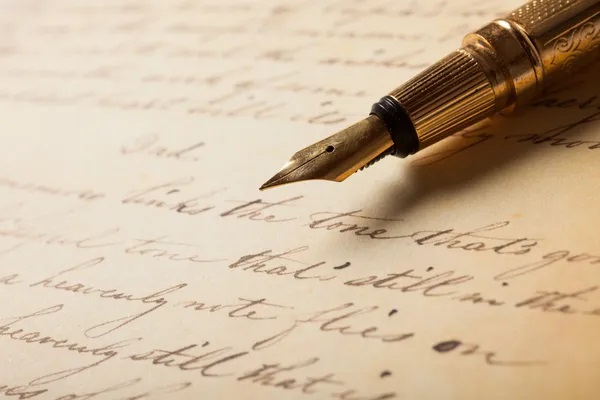When it comes to writing letters, there are two main formats: informal and formal. Each format has its own set of rules for structure and style, which can vary depending on the purpose of the letter and the relationship between the writer and recipient.
An informal letter is typically used for personal or friendly communication, such as writing to a friend or family member. The format for an informal letter includes a greeting, introduction, main body, and conclusion. The greeting should be warm and friendly, using the recipient’s name if possible. The introduction should provide some context for the letter, while the main body should address the purpose of the letter in detail. Finally, the conclusion should wrap up any outstanding points or express gratitude.
On the other hand, a formal letter is used for more serious or professional communication, such as writing to a business or government entity. The format for a formal letter includes a heading (name and address of sender), inside address (recipient’s name and address), date, reference (if any), subject line, body, complimentary close.
When it comes to formatting your letters, there are also some best practices you can follow. For example, using a clear font and font size that is easy to read will make your letter more accessible. Aligning the text to the left or center can also help improve readability. Additionally, leaving enough space between lines and using appropriate spacing can make your letter look more polished.
Whether you’re writing an informal or formal letter, it’s important to follow proper formatting guidelines to ensure that your message is clear and easy to understand. By taking the time to format your letters correctly, you can help ensure that your communication is effective and professional.

| Sections | Topics Covered |
|---|---|
| Glossary of Terms: | Structure and elements of an informal letter, including greeting, body, closing, and signature. |
| Purpose of the letter | Identifying the purpose or intention behind writing an informal letter, such as expressing feelings, providing feedback, or seeking assistance. |
| Recipient’s address | Properly addressing the recipient of an informal letter, including their name, address, and any relevant contact information. |
| Salutation | Choosing an appropriate salutation for an informal letter, such as “Dear [Name]” or “Hello [Name],” and understanding the purpose of a salutation in formal correspondence. |
| Closing | Crafting a suitable closing for an informal letter, such as “Best regards,” “Sincerely,” or “Yours truly,” and understanding the importance of a proper closing in formal correspondence. |
Glossary of Terms
Grammatical Fusion: Grammatical fusion refers to the merging of two or more grammatical structures in a sentence, creating a unique and often informal style. In an informal letter format, this technique can be used to add emphasis or convey a casual tone.
Parallelism: Parallelism is the repetition of grammatical structures in a sentence for clarity and emphasis. Parallelism can be used to create a more formal and structured tone, especially when discussing important or sensitive topics.
Colloquial Language: Colloquial language refers to the use of informal words, phrases, and expressions in speech or writing. Colloquial language can be used to create a more personal and friendly tone, making the letter feel less formal and distant.
Sentence Fragments: Sentence fragments are incomplete sentences that convey a meaning or idea. Sentence fragments can be used to add emphasis or create a more casual tone, making the letter feel less formal and structured.
Abbreviations: Abbreviations are shortened forms of words or phrases. Abbreviations can be used to create a more casual tone, making the letter feel less formal and structured.
Purpose of the letter
In today’s fast-paced world, the art of letter writing may seem like a thing of the past. However, letters still hold great importance in various contexts, from personal correspondence to professional communication. The purpose of a letter can vary greatly depending on its intended audience and context. Here, we will explore the different types of letters and their respective purposes.
Formal Letters
Formal letters are written in a professional setting to convey important information or to request something official. These letters typically follow a specific format, including the sender’s address, date, recipient’s address, salutation, body of the letter, and closing.
Examples of formal letters include job application letters, business proposals, and complaint letters to companies or government agencies. The purpose of a formal letter is to present oneself in a professional manner while effectively communicating the intended message.
Informal Letters
Informal letters, also known as friendly letters, are written between friends and family members. These letters are more relaxed in tone and format compared to formal letters. Informal letters can be used for various purposes such as sharing personal experiences or expressing emotions.
Examples of informal letters include birthday cards, thank-you notes, and letters from friends who are traveling abroad. The purpose of an informal letter is to foster a personal connection with the recipient while still maintaining a sense of formality.
Persuasive Letters
Persuasive letters, also known as sales letters or pitch letters, are written to convince the reader to take a specific action. These letters typically follow a structured format with a clear introduction, body, and conclusion.
Examples of persuasive letters include job application cover letters, product advertisements, and fundraising appeals. The purpose of a persuasive letter is to influence the reader’s decision by presenting a compelling argument or offer.
Request Letters
Request letters are written to request something from someone else. These letters can be formal or informal depending on the context and relationship with the recipient.
Examples of request letters include job interview follow-up emails, event invitations, and requests for information or assistance. The purpose of a request letter is to politely and clearly state one’s needs while maintaining a professional tone.
Personal Letters
Personal letters are written for personal reasons such as expressing emotions, sharing experiences, or offering support. These letters can be formal or informal depending on the relationship with the recipient.
Examples of personal letters include love letters, sympathy cards, and congratulatory messages. The purpose of a personal letter is to connect with the recipient on a deeper level while sharing one’s thoughts and feelings.
Recipient’s address
In today’s fast-paced world, it can be challenging to keep up with the ever-changing rules of etiquette. However, one aspect that remains constant is the importance of addressing your correspondence correctly. Whether you are writing a letter, an email, or an invitation, getting the recipient’s address right is crucial for ensuring that your message reaches its intended recipient.
The Importance of Accurate Recipient Addresses
Getting the recipient’s address wrong can have serious consequences. For example, if you send a letter to the wrong address, it may never be delivered, and your message will go unheard. Similarly, if you email the wrong person, it could lead to embarrassment or even damage your professional reputation.
Moreover, getting the recipient’s address right shows that you are attentive to detail and care about the outcome of your communication. It demonstrates respect for the recipient’s time and effort, and helps build trust and credibility in your relationship with them.
Tips for Accurate Recipient Addresses
To ensure that you get the recipient’s address right every time, here are some tips to keep in mind:
- Double-check all addresses before sending your correspondence. This includes checking the name, street address, city, state/province, and zip code or postal code.
- If you are unsure about any of the information, ask for clarification from the recipient. It is always better to be safe than sorry.
- Use a reliable source such as an online directory or a mailing list service to verify the correct address. This can save you time and prevent mistakes in the long run.
The Impact of Inaccurate Recipient Addresses on Your Business
Inaccurate recipient addresses can have a significant impact on your business, especially if you rely heavily on written communication. For example, if you send an important proposal to the wrong person or company, it could cost you valuable business opportunities and damage your reputation.
Moreover, in today’s digital age, email mistakes can be particularly costly. If you accidentally send an email to the wrong recipient, it could lead to embarrassment, loss of credibility, or even legal consequences if the content is sensitive or confidential.
Getting the recipient’s address right is essential for ensuring that your correspondence reaches its intended recipient. By following these simple tips and double-checking all addresses before sending your communication, you can avoid costly mistakes and build stronger relationships with your clients and colleagues.
Salutation
Example 1: Request for Information
Dear Sir/Madam,
I am writing to request information about your company’s products and services. I am interested in learning more about the features and benefits of your offerings, as well as any promotions or discounts that may be available. Please provide me with a detailed brochure or catalog that outlines your products and pricing. Additionally, please let me know if you have any upcoming events or trade shows where I can learn more about your company in person.
Thank you for your time and consideration. I look forward to hearing from you soon.
Sincerely,
[Your Name]
Example 2: Complaint Letter
Dear Sir/Madam,
I am writing to express my dissatisfaction with the service I received from your company on [date]. Specifically, [describe issue in detail]. I was very disappointed by this experience and feel that it is important for me to bring it to your attention. I would appreciate a prompt response outlining what steps you will take to rectify the situation and ensure that it does not happen again in the future.
Thank you for your time and consideration. I look forward to hearing from you soon.
Sincerely,
[Your Name]
Common Questions About Letter Format for Formal Letter
What is the format for a formal letter?
A formal letter typically follows a specific format, including the date, address of the sender, inside address, salutation, body of the letter, complimentary closing, and signature. The layout should be clear and concise, with ample space between each paragraph to make it easier to read. It’s important to use proper grammar, punctuation, and spelling to convey a professional image.
How do you write a formal letter expression?
When writing a formal letter, it’s essential to maintain a polite and respectful tone. Begin with an appropriate greeting, such as ‘Dear [Recipient Name]’, followed by the reason for writing the letter. Clearly state your purpose and provide any relevant details or supporting evidence. Be concise and avoid using overly emotive language or slang.
What is MLA format for a letter?
MLA (Modern Language Association) format is not specifically designed for letters. However, if you need to cite a letter in an academic paper, you can follow the MLA guidelines for citing a letter in-text and on a separate works cited page.
What is a professional letter template?
A professional letter template is a pre-designed format that can be customized to suit your specific needs. DocuKng (or another document template repository) offers various templates for employment, business, legal, and health-related letters and forms. These templates provide a solid foundation for creating a polished and professional-looking letter.
